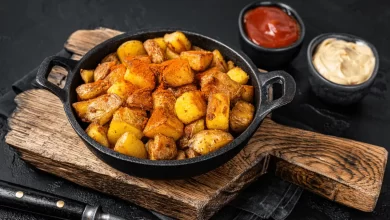Capicola is a culinary gem, and this article will take you on a savory journey through the world of Italian cured meat. From its rich history to its mouthwatering variations, you’ll find everything you need to know about this amazing dish in this comprehensive guide.
What is Capicola?
Capicola, pronounced “ka-PEE-koh-lah,” is a traditional Italian cured meat. It’s often referred to as “coppa” or “capocollo” and is derived from the neck or shoulder of the pig. The meat is cured, seasoned, and aged to perfection, resulting in a delectable delicacy with a rich, savory flavor.
The History of Capicola
This Epic Meat receipe has a long and storied history in Italy, dating back to Roman times. It was a favorite among shepherds and farmers due to its ability to be preserved for extended periods. Over the years, it has evolved into a beloved Italian specialty, cherished for its unique taste and artisanal craftsmanship.
Capicola Variations
Capicola comes in a variety of regional and flavor variations. Here are some popular ones:
Southern Italian
The southern regions of Italy, particularly Calabria and Sicily, are famous for their spicy variation of the receipe. This variety includes red pepper flakes, garlic, and paprika, giving it a fiery kick that ignites your taste buds.
Sweet Variant
Sweet Capicola, or “Dolce Capicola,” hails from the northern regions of Italy. It features a milder, sweeter taste and is seasoned with fennel and other aromatic spices, making it a versatile choice for various culinary creations.
Soppressata Variant
Soppressata Capicola, often referred to as “Soppressata,” is a type of meat that is pressed and aged longer. This process results in a firmer texture and an intensified flavor profile, perfect for charcuterie boards and sandwiches.
Making Capicola at Home
You can create your own delicious Capicola right in your kitchen. Here’s a simple, pork-free recipe that can be made using turkey:
Homemade Turkey Capicola Recipe
Ingredients:
- 2 pounds of boneless turkey breast
- 1/4 cup kosher salt
- 2 tablespoons sugar
- 1 tablespoon pink curing salt #1
- 2 teaspoons crushed red pepper flakes
- 4 cloves garlic, minced
- 1 teaspoon fennel seeds
Instructions:
- Combine kosher salt, sugar, curing salt, red pepper flakes, garlic, and fennel seeds in a bowl to create a seasoning mix.
- Rub the seasoning mix generously over the turkey breast, ensuring it’s evenly coated.
- Place the seasoned turkey breast in a resealable plastic bag and refrigerate for 7-10 days, flipping the meat daily.
- After the curing period, remove the turkey breast from the bag and rinse it thoroughly under cold water.
- Pat the turkey breast dry with paper towels and hang it in a cool, dry place for 3-4 weeks, or until it firms up.
- Once fully cured and dried, your homemade turkey Capicola is ready to be sliced and enjoyed!
Frequently Asked Questions
No, Capicola and prosciutto are not the same. While both are Italian cured meats, Capicola is made from the neck or shoulder of the pig, whereas prosciutto is made from the hind leg. They have distinct flavors and textures.
This cured meat is incredibly versatile. You can enjoy it in sandwiches, antipasto platters, or even as a pizza topping. It pairs wonderfully with a variety of cheeses, olives, and crusty bread.
Absolutely! The recipe provided in this article offers a pork-free alternative using turkey. It’s a great option for those looking for a lighter, healthier version of this delicious Italian delicacy.
In conclusion, This savory masterpiece is a beloved Italian cured meat with a rich history and a wide range of flavor profiles. Whether you savor the spicy southern variety or the sweet northern one, or even opt for a homemade turkey Capicola, your taste buds are in for a delightful treat. Experiment with this versatile ingredient, and enjoy it in various culinary creations. Buon appetito!





